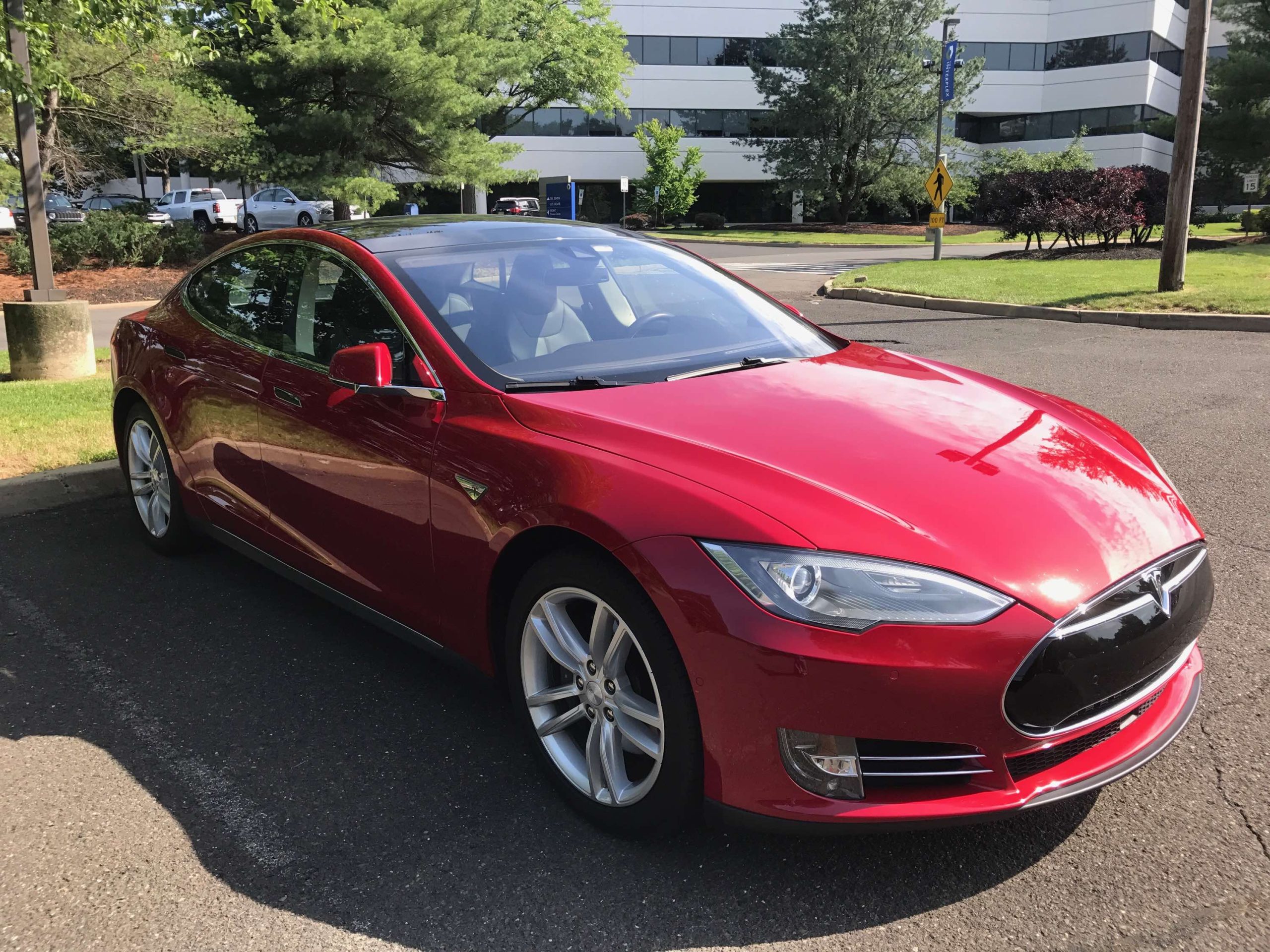
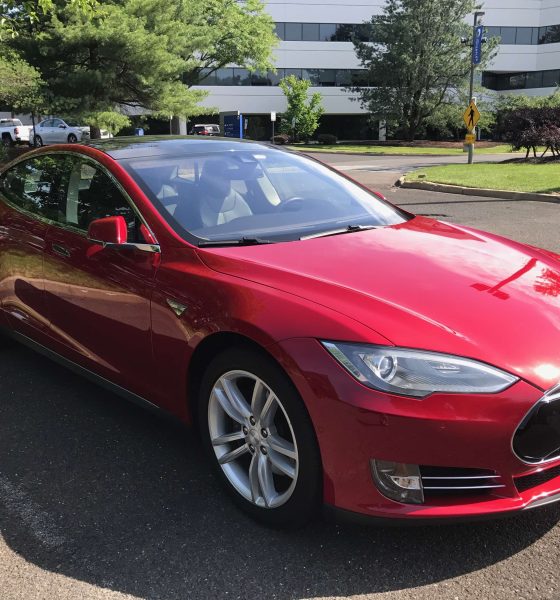
DIY
Washing your Tesla using a waterless wash and wax system from Smart Polish Pro
Owning a Tesla has inspired me in many ways I never thought possible. Among these has been the inspiration to live a more eco-friendly life and the inspiration to go to a car show to share my love of the car. It has also inspired me to want to keep the car clean when practical. The problem is, I love the car too much to subject it to an automatic car wash and spare time is a resource I do not have an abundance of. Actually, who am I kidding? Even if I did have all the spare time in the world, washing cars is not a strength of mine and so my better half does the heavy lifting in that area. But again, who has the time to hand wash a car regularly?
Enter Smart Polish Pro. For the record, this is not a paid endorsement of the system. I was asked if I might be interested in trying their Waterless Wash & Wax system (I was) so I decided to share my experience with using the product.
Here’s my review.
Smart Polish Pro Waterless Wash & Wax
Smart Polish Pro is a waterless wash and wax system that almost sounds too good to be true. It claims to be quick, easy to use and wastes no water because it requires none at all. Color me curious. They describe the product’s formula as “one that safely lifts dirt and grime away from the surface using a clever emulsification process developed by our chemists.” The formula is applied directly onto the dirty vehicle and combines washing and waxing in one process which is perfect for a speedy clean!
After using it on our Multicoat Red Model S, I can say that this product is easy to use and leaves the car’s body panels looking great!
What I can’t say with any certainty is how long it has been since our Model S had a bath. I know her last wash wasn’t in the month of June so at least a month. She was adequately dirty, though certainly did not look like she just completed a mud race. Oh, and there was a fantastical splatter of bird waste that I can only describe as looking like a clumsy toddler lost their vanilla ice cream while standing next to the car.
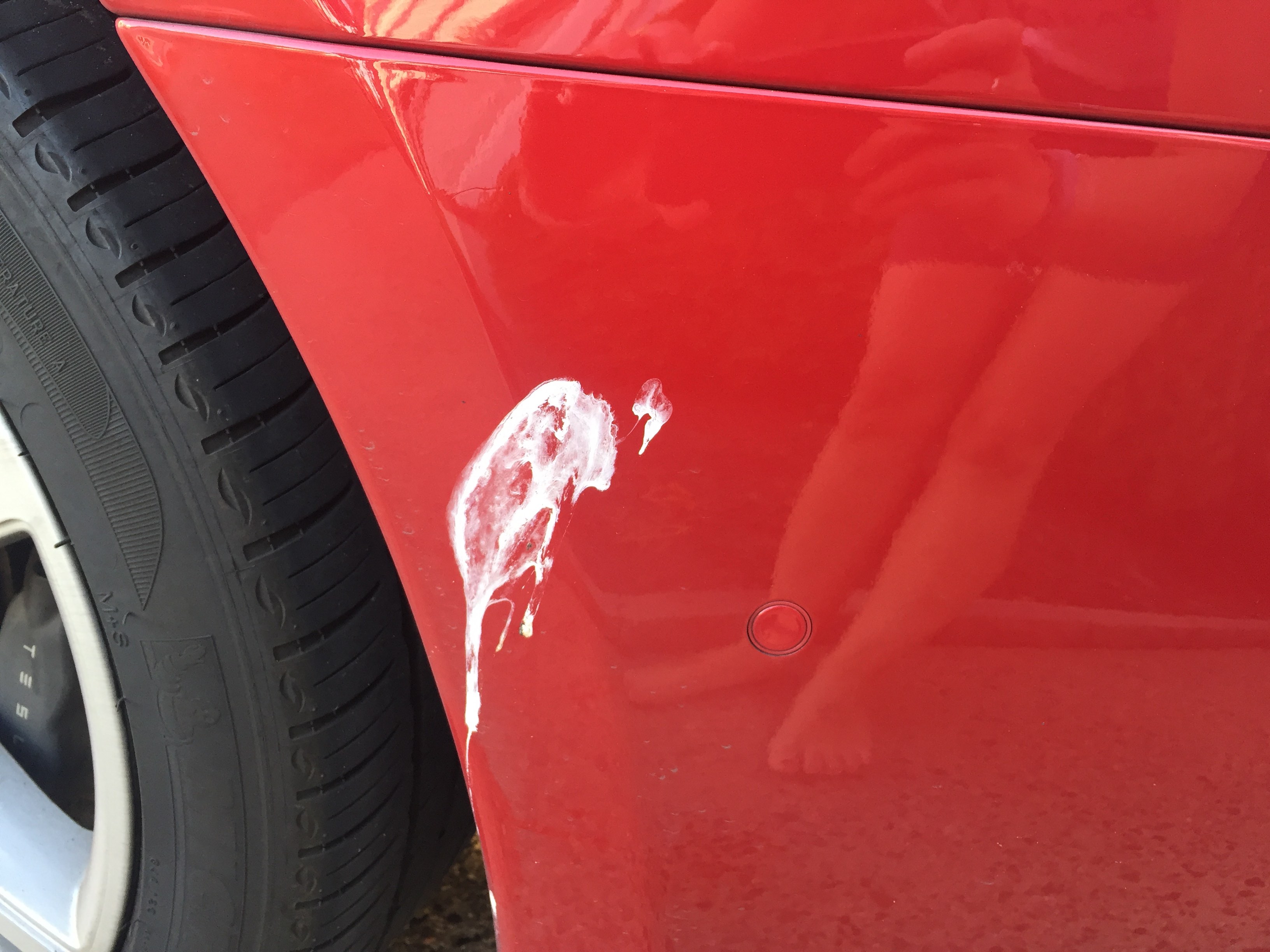
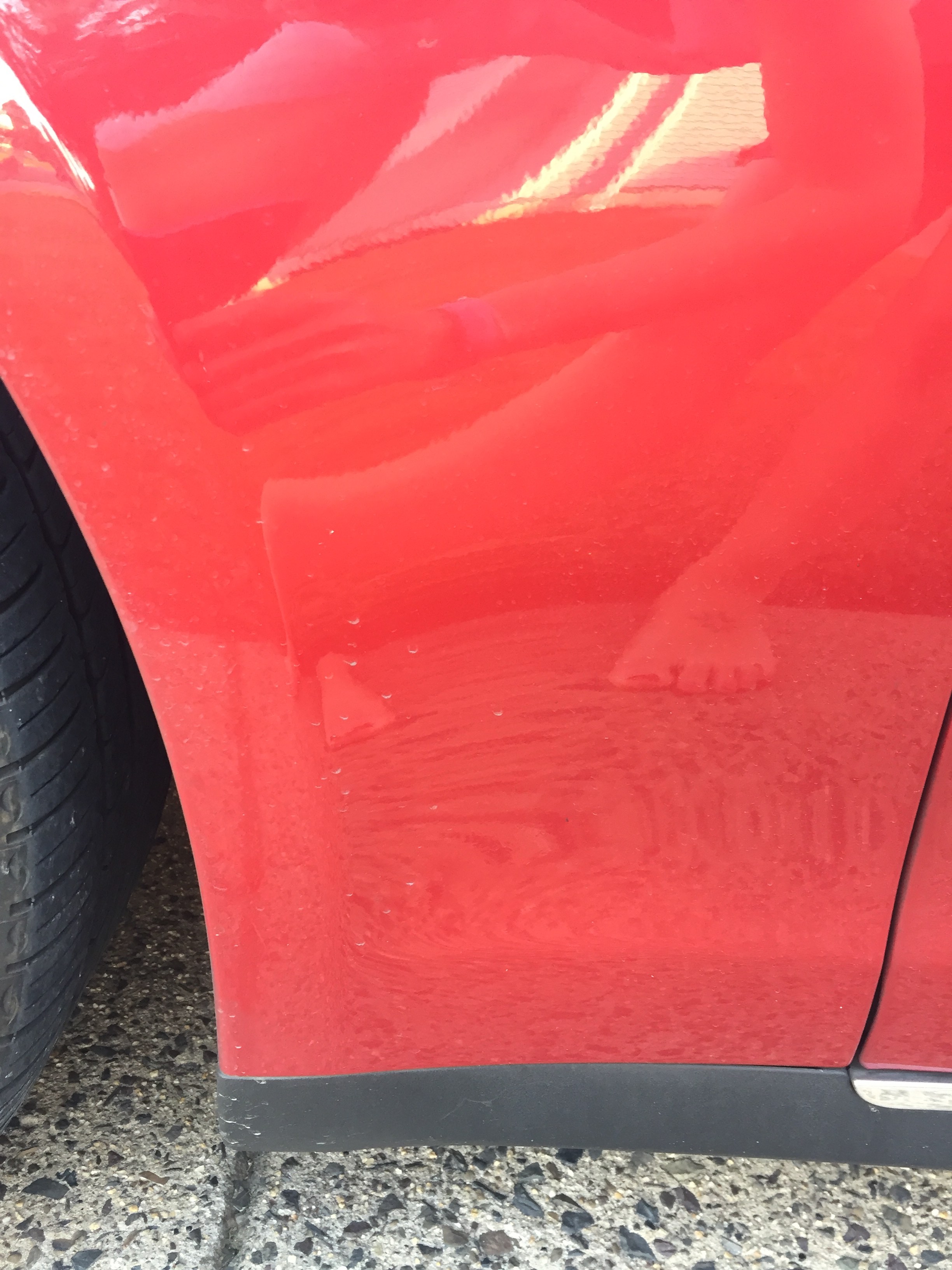
To use the product, shake the bottle well then install the included trigger sprayer. You’ll need some microfiber cloths for this product. Spray it lightly on both the body panel and cloth #1, just one panel at a time. Wipe the area in a single direction, not in circles. Use your second cloth (clean, dry) to wipe again in a long, sweeping motion to buff and reveal the shine of the car. That’s it. Spray, wipe, then wipe again. Move along to the next body panel. This product is meant for painted exterior vehicle surfaces. Continue the process until the car is complete. Stand back and marvel at how shiny your car is.
My first thought was that the smell of the product, while not strong or easily identifiable, was pleasant. As the process continued, I had more thoughts including the realization that the drying step of washing a car is among the worst parts. This is especially true in hot or sunny weather where the real threat of it prematurely drying and leaving water marks exists. I’m sure all you sunny SoCal folks out there agree!
Smart Polish Pro’s Waterless Wash and Wax system product completely eliminates the need to use water and thus completely eliminates the threat of it drying too quickly and leaving spots behind. Perhaps you will think to yourself that you don’t get spots because you wash (with water) and dry your car one body panel at a time. I’d say to you: how do you find the time and how do you shield the completed body from water splashes when you spray your hose at the next panel? Oh you don’t use a hose? Refer to my first question about time.
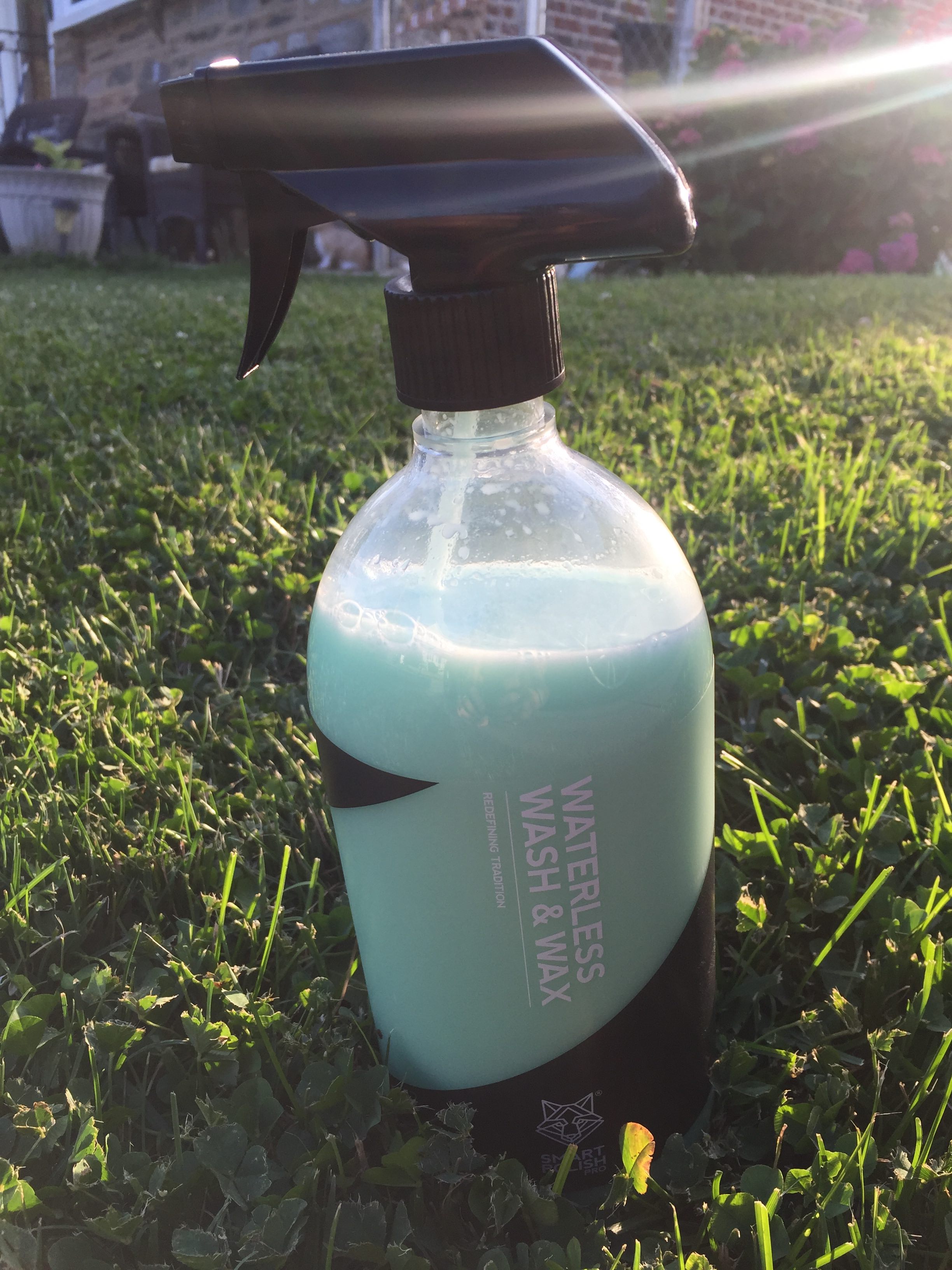
It next became really apparent that even if you like to wash your car with water, this product would be a perfect solution for car shows, meet ups or photo shoots where your own water supply is not readily available. No matter how well you wash your car before you head to your destination, there’s a pretty good chance of encountering at least one of: dust, pollen, puddles, rain or bird waste on your way to show off your car. I’d also venture to say that if you are preparing a car for show to a potential buyer, this product is a great way to give it a quick clean up with extreme shine.
Speaking of shine, as I admired how shiny the car really was (and yes, made faces at myself while looking at my clear-enough-to-see-facial-blemishes reflection in the hood), I noticed that the Smart Polish Pro’s waterless wash and wax product left behind no residue. There was no film, streaks or spots to speak of. Take a look at a few after pictures and decide for yourself.
Bottom line: I’m glad a single bottle has enough product in it for at least 4 more uses because I’m already looking forward to using it again!
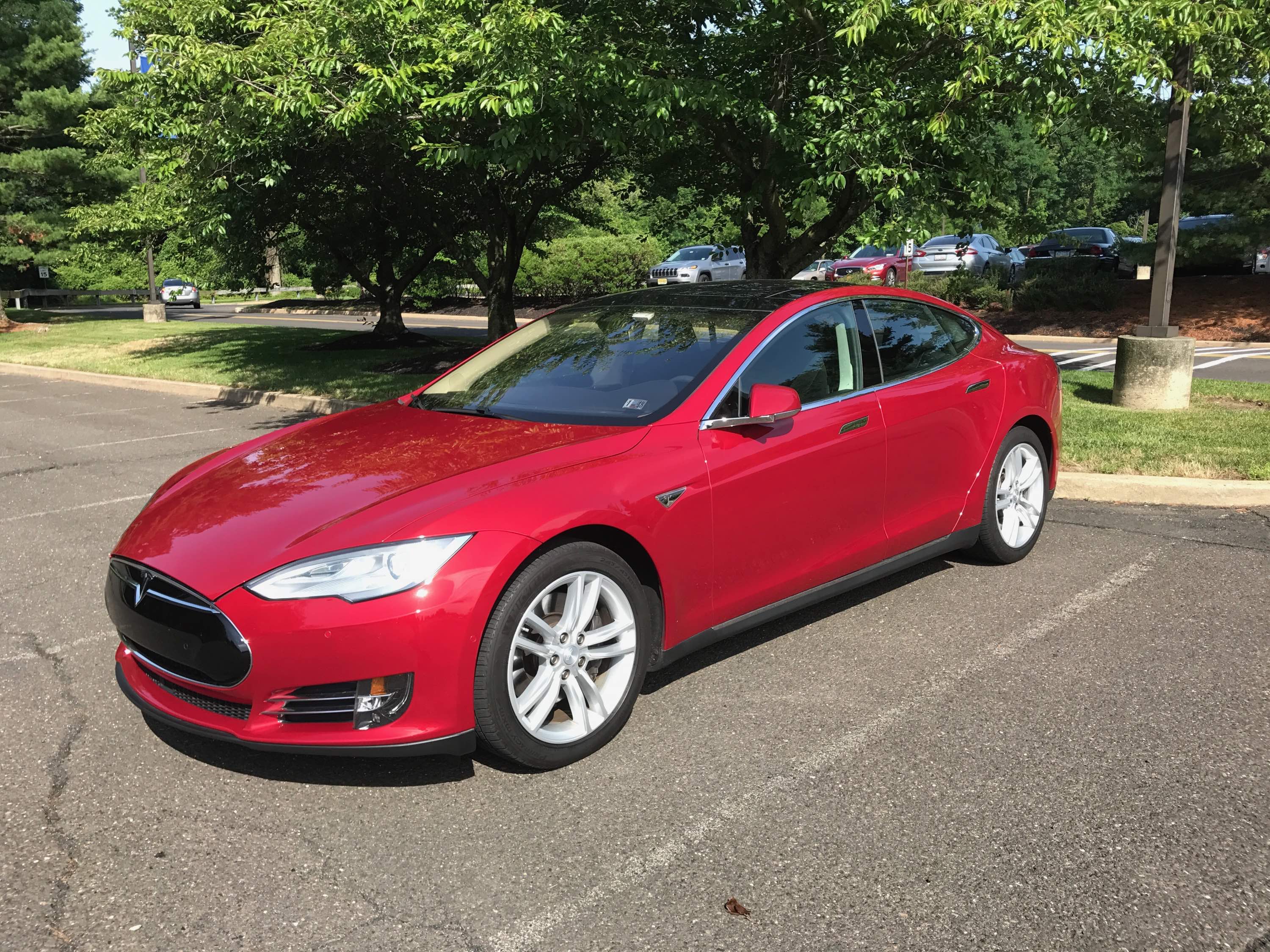
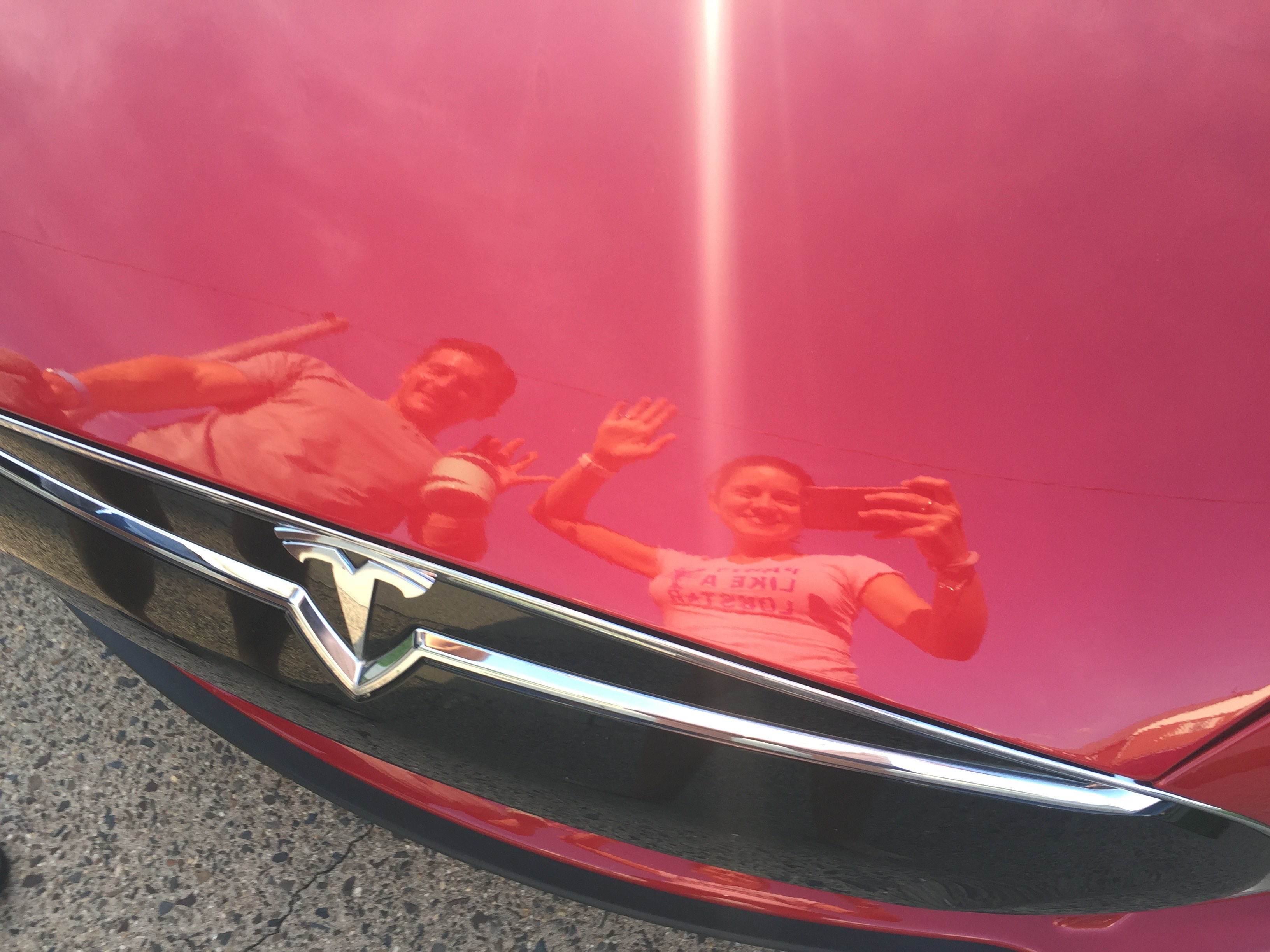
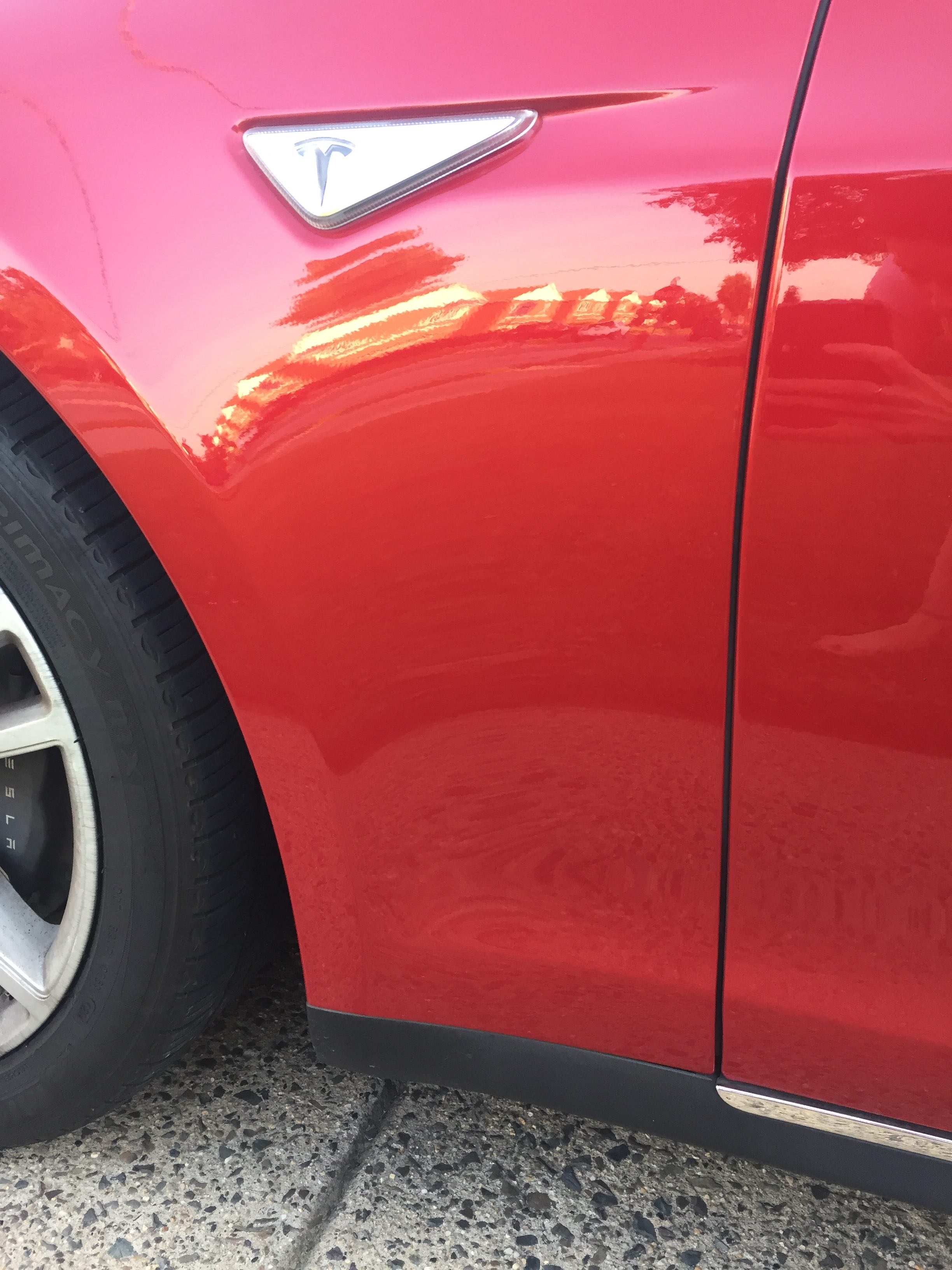

DIY
Tesla Model 3 pickup “Truckla” gets updates and a perfectly wholesome robot charger
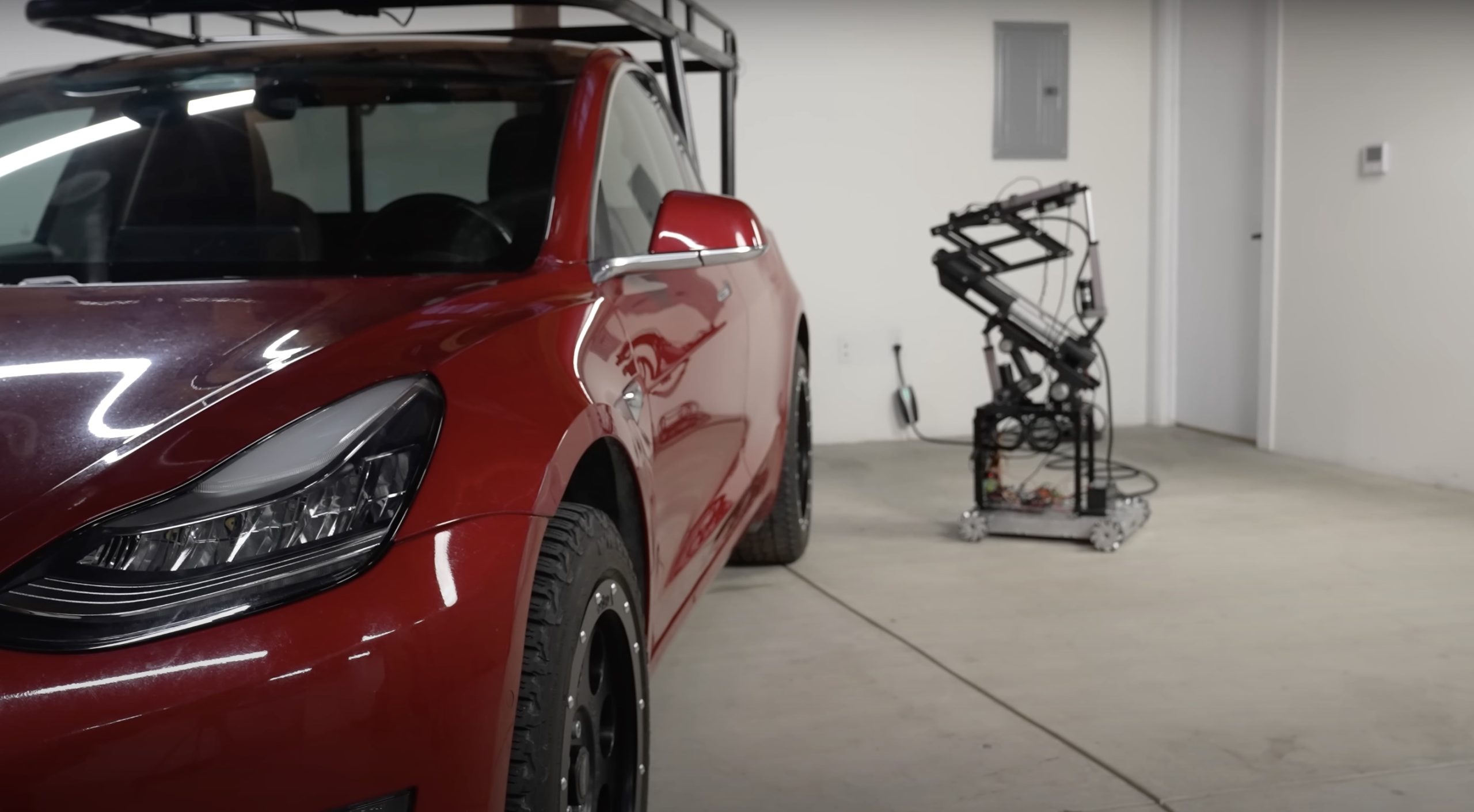
Back in 2019, YouTuber Simone Giertz, the self-proclaimed “Queen of Sh*tty Robots,” created a one-off Tesla Model 3 build that took the automotive world by storm. Fondly dubbed as “Truckla,” Giertz noted that the vehicle was actually her dream car — as crazy as that may sound.
Now almost four years later, the YouTuber posted an update on Truckla. And just like every other big project that one probably started, Giertz stated that she actually stopped working on Truckla when the vehicle was about 80% complete. The car is driving though, but a lot of stuff was not really working very well.
Thus, for her Truckla update, Giertz shared how most of her Model 3 pickup truck conversion was essentially completed. Truckla got a lot of detailing done, she got a slight lift, and she now has a functional tailgate. One has to admit, Truckla’s tailgate is pretty darn cool.
The “Queen of Sh*tty Robots” also opted to give Truckla a friend in the form of an automatic robot charger. Unlike Tesla’s rather interesting snake charger from years past, Truckla’s charger would come in the form of a rover, thanks to her friends at robotics platform Viam. Giertz aptly named Truckla’s robot charger friend “Chargela,” which is an appropriate name for such an invention.
Also true to form for Giertz, Chargela’s first encounter with Truckla was just a tiny bit awkward. One could say that Chargela may have just been a little bit nervous on his first try without human hands helping him. Most importantly, the system did work, so Giertz would likely keep using Chargela for her Model 3 pickup.
Teslas are very tech-heavy vehicles, so projects like Giertz’s Truckla are always remarkable. The fact that the Model 3 works perfectly fine despite having a good chunk of it cut off and turned into a pickup truck bed is mighty impressive any way one looks at it. Overall, Truckla will always be one of the coolest Tesla DIY projects to date, so any updates about the vehicle are always appreciated.
Truckla’s nearly four-year update can be viewed below.
Don’t hesitate to contact us with news tips. Just send a message to simon@teslarati.com to give us a heads up.
DIY
Tesla fan creating ‘CyberRoadster’ using Model 3 Performance parts in epic DIY build
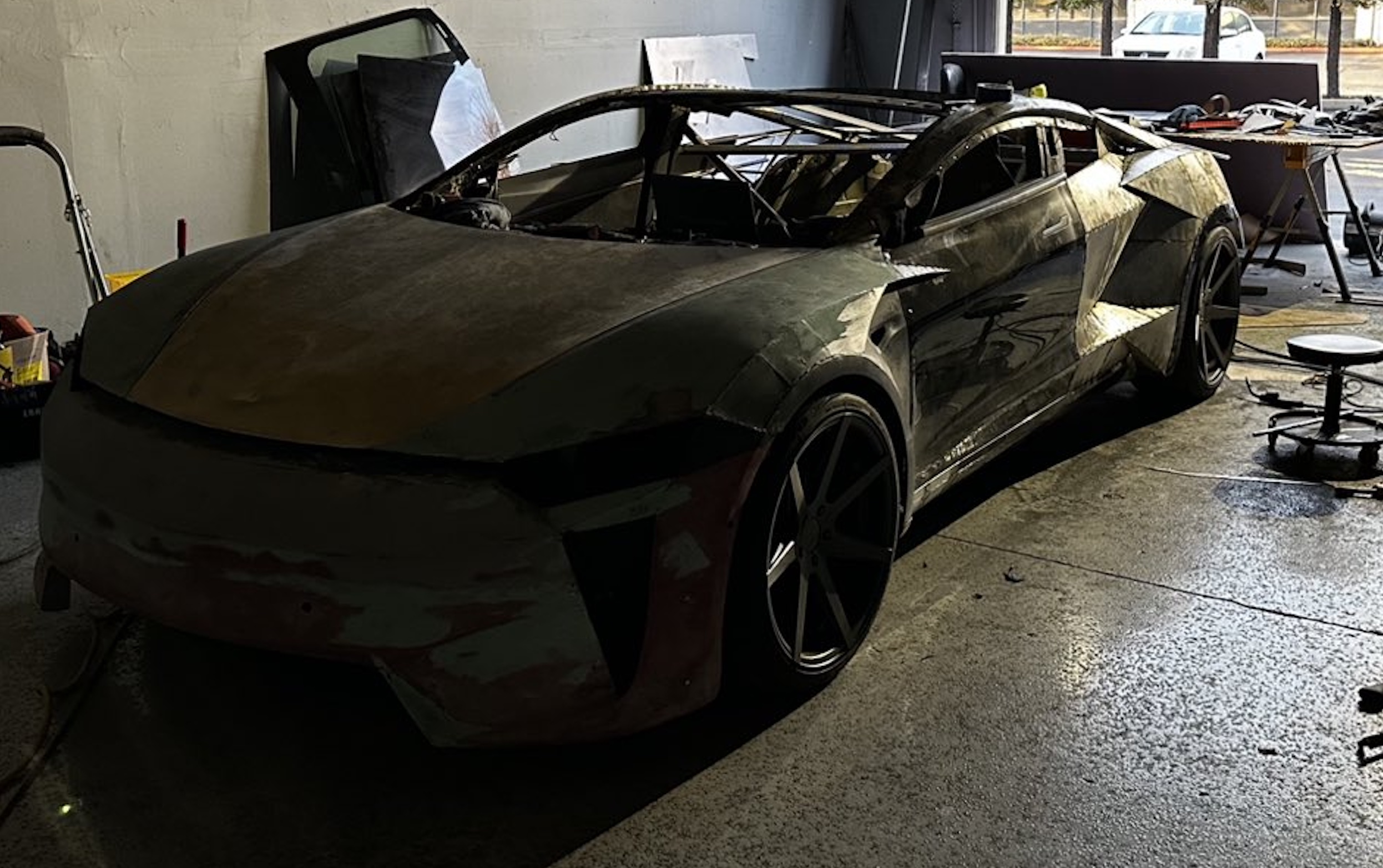
A Tesla owner is taking his hobby and love for electric vehicles to new levels by creating what could only be described as one of the coolest EV-related DIY projects to date. The idea for the project is simple: what happens when you cross a supercar with the Cybertruck? You end up with a two-seater CyberRoadster.
Tesla owner David Andreyev, who goes by the username @Cyber_Hooligan_ on Twitter, has spent the last few months creating a Cybertruck-inspired version of the next-generation Roadster made from a salvaged Model 3 Performance. Starting with a Model 3 Performance is an inspired choice, considering that it is Tesla’s first vehicle that has a dedicated Track Mode.
A look at Andreyev’s YouTube channel, which can be accessed here, shows the meticulous build that the Tesla owner has implemented on the project car. What’s particularly cool about the CyberRoadster is the fact that it’s being built with parts that are also from other Tesla vehicles, like its front bumper that came from a new Model S. Recent videos suggest that the project car’s rear bumper will be from a new Model S as well.
The journey is long for Andreyev, so the completion of the CyberRoadster will likely take some more time. Despite this, seeing the Tesla owner’s DIY journey on such an epic build is more than satisfying. And considering that the CyberRoadster is evidently a labor of love from the Tesla owner, the final results would likely be extremely worth it.
There’s a lot of crazy Tesla modifications that have been done as of late. But some, as it is with a lot of things on the internet these days, have become more silly gimmicks than serious automotive projects. Fortunately, car enthusiasts like Andreyev, who just happen to also love electric vehicles, are taking it upon themselves to create one-of-a-kind EVs that would surely capture the attention of anyone on the road.
Check out the latest video in the CyberRoadster’s creation below.
Don’t hesitate to contact us with news tips. Just send a message to simon@teslarati.com to give us a heads up.
DIY
Tesla owner ‘charges’ Model 3 with homemade solar panel trailer
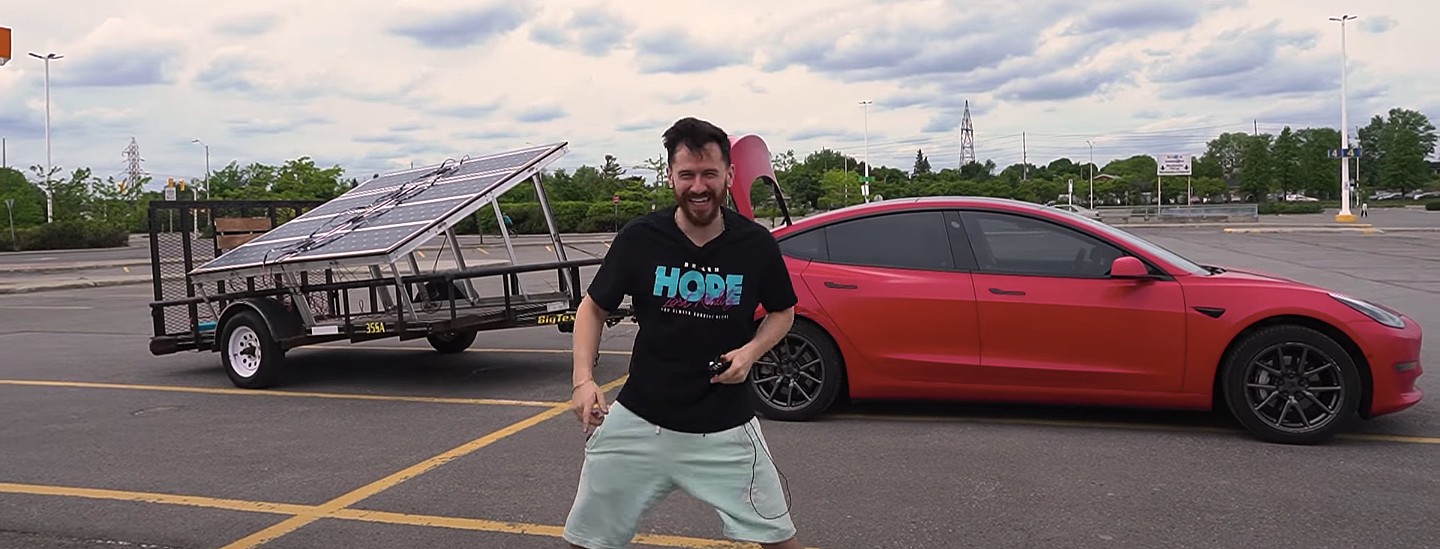
A Tesla owner has demonstrated a rather novel way to charge his Model 3. In a recent video, Sean Callaghan of the ItsYeBoi YouTube channel opted to use a series of off-the-shelf solar panel sheets onto a towable trailer to create a mobile charging unit for his all-electric sedan.
Callaghan planned to use only the sun and the solar sheets purchased from e-commerce platform Wish to charge his Model 3. The solar panel sheets would collect energy from the sun and transfer it to a control panel. The control panels were connected to batteries that would hold the energy—the batteries connected to an inverter, which would then charge the Tesla Model 3.
The entire assembly would provide the Model 3 with about 800 watts of energy on a completely sunny day. However, Callaghan shot the video when weather was overcast, so the entire solar panel trailer build only managed to provide around 300 watts throughout the YouTube host’s test.
To put this into perspective, a 100 volt home wall outlet provides 1.4 kilowatts of power, or 1,400 watts. Therefore, the 300-watt solar panel assembly built by Callaghan was producing less than 25% of the energy of a typical wall outlet. This is pretty marginal compared to Tesla’s 250-kilowatt V3 Superchargers, which provides 250,000 watts, or about 833 times as much power as the makeshift solar panel build.
However, Callaghan’s goal was not to charge the vehicle quickly. He explained the idea came from a previous video where he used a $5,000 Wish-purchased wind turbine to charge his Model 3. He wanted to test the effectiveness and efficiency of the system, which was questionable due to the time it would take to charge the battery fully.
The Model 3 battery pack is 78 kWh, and with Callaghan’s 300-watt system charging his electric vehicle, it would take 260 hours to supply the Tesla’s battery to full capacity.
In the past, electric vehicle enthusiasts have asked Tesla CEO Elon Musk why the company’s vehicles do not contain solar glass roofing, which would charge the car while the owner is driving. Musk has explained that the efficiency of this idea is challenging and likely would not provide an ample amount of range.
When asked about the idea of putting solar panels on the top of Tesla’s vehicles in 2017, Musk responded that the idea was “Not that helpful, because the actual surface of the car is not that much, and cars are often inside. The least efficient place to put solar is on the car.” It also would not be cost-effective for Tesla because “the cost of the panels and electronics, R&D and assembly would never pay for itself in the life of the vehicle, compared to charging from the wall in your garage,” Quartz noted.
That being said, Tesla plans to implement solar panels onto the motorized tonneau of the upcoming Cybertruck. The idea was discussed on Twitter when Musk stated that the optional feature would add “15 miles per day, possibly more” when parked in the sunlight. Also, fold-out solar wings could help capture enough solar energy for 30 to 40 miles a day.
Watch Sean Callaghan’s video of his makeshift solar panel trailer below.








